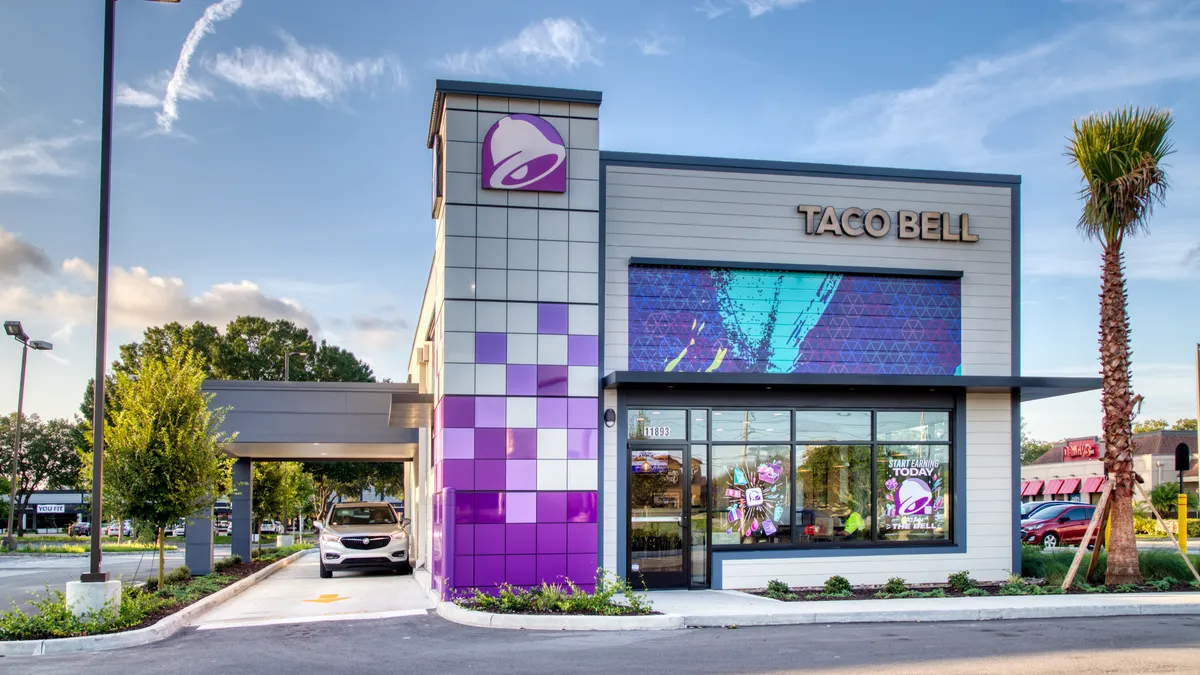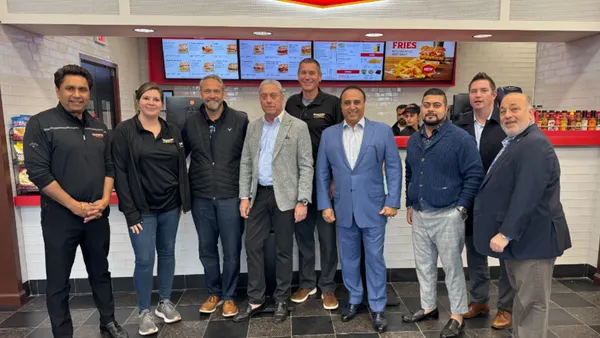Yum bolstered its technology across thousands of restaurants in 2023, deploying a range of products from front-of-house kiosks to back-of-house automation to support franchisees and grow digital sales.
“2023 was a landmark year for successfully scaling our suite of proprietary technologies across our global restaurant base,” Yum CFO Chris Turner said Wednesday during the company’s earnings call.
Technology remains an important aspect of Yum’s digital sales, which grew 22% to nearly $30 billion in 2023. Digital mix also exceeded 45%, according to the company’s earnings release. Systemwide sales were up 10% globally, as well.
“If you look at that 10% global system sales growth for the full year, we think digital played a big part of that, both on the unit side and the same-store sales side,” Turner said. “As those capabilities continue to mature, we can get more and more leverage out of our digital technology, teams and capabilities in-house.”
Yum has also accelerated the rollout of proprietary technology that optimizes back-of-house operations and helps operators better run their restaurants, CEO David Gibbs said.
“We are equipping our franchise partners with distinctive capabilities that differentiate them from the competition, especially in emerging markets,” Gibbs said.
Check out how Yum is deploying various technologies across its restaurant brands below.
Kiosks
Kiosks help provide a consistent customer experience, boost ticket sizes and help streamline operations, Turner said. Over the past year, the chain increased its penetration of kiosks by 70% in KFC restaurants outside of China. By the end of the year, kiosks were installed in 500 KFC U.S. locations, up from about zero two years ago. The company has begun adding kiosks to KFC Latin America units using its proprietary TicTuk platform, and expects to triple the number of restaurants featuring kiosks this year, Turner said. Kiosks will likely be in a vast majority of KFC stores by the end of 2026, Turner said during the company’s November earnings call. Kiosks are also being installed across Habit Burger restaurants.
Kiosks have been installed in all Taco Bell U.S. locations and are already making an impact on sales. Taco Bell’s U.S. same-store sales were up 3% during the quarter and 15% on a two-year basis. Taco Bell reported a record digital sales mix of 31%, a seven-point increase year over year, during Q4. In-store kiosks sales increased 15 points last quarter, as well.
Point of Sales
Poseidon, Yum’s proprietary point-of-sales system, was added to 1,700 Taco Bell U.S. locations last year. A total of 5,000 restaurants featured the system at the end of 2023. Poseidon is a cloud-first system that incorporates order management, cash management and real-time store reporting, according to Yum’s website.
Artificial intelligence and automation
Dragontail, an AI-based kitchen order management and delivery technology, was deployed in 1,000 more restaurants during the quarter. For all of 2023, Yum added the tech to 4,000 additional units, Gibbs said. Dragontail is now in 7,000 locations across Pizza Hut and KFC. This year, Dragontail will be added to nearly 6,000 more restaurants. Yum acquired Dragontail Systems in 2021 for over $72 million.
Yum’s custom-built SuperApp, which offers automated routine management tools for restaurant managers, is in 8,500 Pizza Hut restaurants globally. KFC plans to have it installed in 6,000 units in 2024, Turner said.
An AI-driven inventory management system is now in 90% of its KFC U.S. locations and about half of its Taco Bell U.S. locations. The technology is helping drive “more seamless and more accurate inventory ordering processes for our restaurant managers,” Turner said. Another 3,000 KFC, Taco Bell and Pizza Hut stores will have this system installed this year.
Yum’s GlobalData Hub
The company will continue to bring together insights and provide “smarter and quicker decision making,” and further the company’s use of data, Turner said. This year, Yum expanded the reach of its Yum GlobalData Hub, which gathers most of its global transaction-level sales data and other key operational and customer metrics. The company will develop and test new AI-driven capabilities that use this data and integrate it into its tech platforms. The technology could allow personalized upsell recommendations for customers using digital platforms, intelligent pricing recommendations and routine management for general managers, Turner said.










